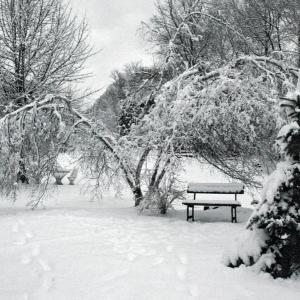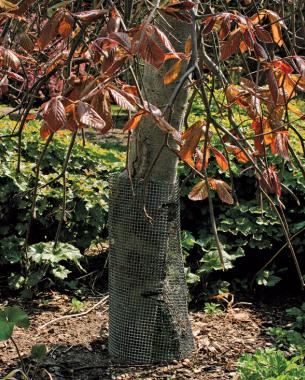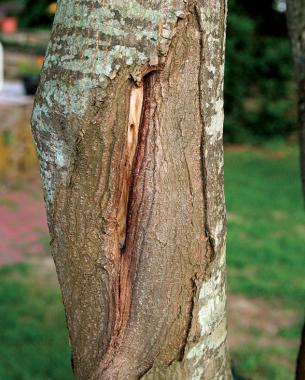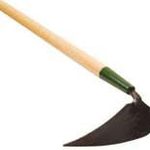
Over my many years of dealing with winter damage, I have experienced just about every kind under the sun—or snow, I should say. From an evergreen shrub’s burned leaves to the total death of flower and leaf buds, winter can be a devastating season for our gardens.
Across the United States, the types of damage vary, due to differences in climate and plant species, but winter-weather damage is difficult to avoid. Some damage, such as a late frost turning early flowers on magnolias to mush, is chronic; with a little anticipation, you can do something about it. What is hard to predict—and almost impossible to avoid—is sudden, severe damage that forces plants to use stored food reserves to replace or repair damaged parts. This damage usually occurs just as spring arrives, when the plant normally uses reserves to produce new growth. The effect of this damage, especially if it occurs over multiple growing seasons, can reduce a plant’s sustainability, making it weaker and more susceptible to disease.
With the common types of winter damage, it’s important to know why they happen, how to deal with them, and, most important, what you can do to protect your plants from falling victim in the future.
Broken branches

Broken branches shouldn’t be removed right away.
Ice, snow, hail, wind, and other winter-weather extremes often cause branches to break, altering the plant’s appearance and, possibly, its productivity.
How do I fix it? Unless a hazard exists, wait until the end of winter to prune all broken twigs and branches back to within one quarter of an inch above a live bud or to the branch collar of the nearest live branch. This pruning to reshape the plant can also stimulate new growth in the coming season.
How do I prevent it? Removing the most susceptible parts of a plant prior to the onset of winter weather can help with future breakage. Branches that appear partially dead or especially weak would qualify for early removal.
Frost damage

Frost damage can happen without warning.
Pruning or fertilizing in late summer or early fall may stimulate new growth, which is unable to acclimate (harden off) before sudden temperature drops or unexpected wind or ice storms show up. The new foliage turns an ugly brown or black. When temperatures start to warm up and plants break dormancy, an unexpected frost or freeze can, again, kill new growth.
How do I fix it? Damaged leaves and flowers may drop by themselves after the danger of severe weather has passed, or you can prune to remove badly damaged or broken branches to help stimulate new growth. Most plants will usually produce new leaves if branches and buds have not been injured too severely.
How do I prevent it? Avoid pruning or fertilizing in late summer or early fall. This will help prevent a sudden push of new, tender growth. If leaf signs suggest an application of fertilizer is in order, use only a slow-release or organic option. If you must prune at this time, do it sparingly; wait, instead, until a plant reaches full dormancy. In spring, wait until the plant has broken dormancy and the threat of low temperatures has passed before tackling any pruning projects.
Desiccation

Desiccation gets worse with premature pruning.
This type of damage occurs when a plant’s tissues dry out from wind or ice-melting chemicals, lack of moisture in the air or soil, or a “wrong plant/wrong location” scenario. Evergreens are particularly susceptible because their leaves never stop losing water, even during their “dormant” season. When these leaves evaporate more water than the roots take in, you’ll see some damaged foliage.
During severely cold weather, the ground surrounding the root system can freeze, which decreases or stops the uptake of water. If the weather turns warm and sunny while the ground is still frozen, evaporation increases and discolored or “burned” foliage starts to appear. The damaged leaves are generally concentrated on the side of the plant facing the wind, where evaporation is greatest.
How do I fix it? Most leaves will fall or be pushed off by new growth, but those that don’t can be hand-stripped or pruned away. Premature pruning can increase damage by exposing vulnerable inner leaves, so resist coming to the rescue of your plants too early.
How do I prevent it? If conditions are dry in fall, make sure you water to compensate for the lack of rain. If plants begin to show signs of winter burn, pull out the hose on the warmest day possible (to avoid the hose freezing and bursting) and water the frozen ground to melt the moisture frozen in the soil and make it available for uptake. It’s also a good idea to maintain a 2- to 3-inch-thick layer of mulch to reduce water loss.
Don’t bother applying antidesiccants, which put waxy coatings on evergreen leaves, because they degrade rapidly. Although unattractive, windbreaks of burlap, canvas, or similar materials can be installed to protect small evergreens. Do this in fall to help reduce the wind’s force and to help shade your plants.
Frost heave

Frost heave can damage roots.
Frost heaving occurs when periods of soil freezing and thawing push small, shallow-rooted plants out of the ground. This prevents the plants from having firm contact with the soil and exposes the roots to wind desiccation.
How do I fix it? If a plant is heaved from the ground, replant it as soon as the soil thaws. If the root system is small enough, you might be able to push the plant back easily into the soft soil with your fingertips.
How do I prevent it? Use mulch. It acts as a buffer to the soil and reduces the amount of alternate freezing and thawing of the soil.
Rodent damage

Rodent damage is easy to avoid.
Mice, voles, and rabbits chew off tree bark at ground level or below. They sometimes completely remove the bark around the tree’s base, causing the plant to die.
How do I fix it? Once the damage is done, there is not much you can do. Allowing the tree to seal wounds on its own and taking steps to prevent additional damage are the best ways to manage the situation.
How do I prevent it? Keep mulch away from the base of the tree, and examine it frequently for the presence of mice or voles. A guard is the most effective mode of prevention. Place a strip of galvanized screen or mesh around the trunk, and secure it with a twist of wire to prevent the strip from unrolling. Be sure to push the end of the roll into the ground to stop critters from attacking below the soil surface. This metal guard will last indefinitely and can be left in place all year.
Salt burn

Salt burn has a simple solution.
Road runoff contains dissolved salts that not only injure plants directly but also can change the structure of the soil, causing it to become compacted. This condition restricts the nutrients, water, and oxygen available to the plants, putting them under stress. Shoot tips and young leaves usually receive the most damage. One of the symptoms of salt damage is dried, burnt leaf edges.
How do I fix it? Where runoff is unavoidable, flush the area around the plants in early spring by applying 2 inches of water over a two- to three-hour period, repeating three days later. This will leach much of the salt from the soil. If salt spray from the road surface is a problem, use water to rinse the foliage and branches of any affected plants when salt spray is heavy and again in early spring.
How do I prevent it? Don’t pile snow containing salt around plants or trees or put it where runoff might reach plant roots. Ask road-maintenance workers if they can direct salty runoff away from your property. When selecting species for a new roadside planting, minimize the potential for salt damage by planting salt-tolerant selections. Install a low wall or hedge of salt-tolerant evergreens, which can deflect salt spray away from sensitive plants nearby.
Remember the damage that salt can cause when removing ice from sidewalks and driveways. Instead of tossing a handful of rock salt on slick surfaces, stick with sand or sawdust to improve traction.
Some salt alternatives are better for the environment
Throwing just any chemical listed as a deicer onto your sidewalks can wind up polluting local bodies of water. Consider, instead, using new eco-friendly salt alternatives, like calcium chloride. Some products even use vegetables, such as beets, as their primary ingredient. Many not only are safer for the environment but also can actually keep your walkways ice-free longer because they work better at lower temperatures, unlike their salt-based counterparts.
Sunscald: Does it really exist?

A type of winter damage called sunscald (also known as frost crack) is still being researched. While bark opening and closing may be related to winter damage, bark split appears to relate more to prewinter wounds or injuries than to any one season’s temperature extremes. Previously recommended trunk-protection methods, such as tree wraps and reflective paints, are generally unnecessary and ineffective.
Fine Gardening Recommended Products

Spear & Jackson 4930FZ Razorsharp Telescopic Tree Pruner
Fine Gardening receives a commission for items purchased through links on this site, including Amazon Associates and other affiliate advertising programs.

Sun Joe Cordless Telescoping Pole Chain Saw
Fine Gardening receives a commission for items purchased through links on this site, including Amazon Associates and other affiliate advertising programs.

Long Handle EZ-Digger
Fine Gardening receives a commission for items purchased through links on this site, including Amazon Associates and other affiliate advertising programs.


















Comments
Hi, I run my own blog on lawn care and I recently received a comment on one of my posts with a link to this article. I think it's great! Very informative. Thanks for sharing. My blog is similar and I think you might enjoy it. http://grassundermyfeet.com/
We are lucky here in North Florida, while it may not be the most ideal right now (low of 22 tonight) we only get a few weeks of brutal winter weather. And I know what you're thinking... Florida has a winter? The answer is YES! North Florida especially, and this isn't just normal winter weather. It's highly humid, which makes for a bone brittling cold. Our plants are covered and doing just fine but we are ready for sunshine!
Just wondering if this is science based information.
Log in or create an account to post a comment.
Sign up Log in